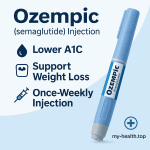Introduction
LASEK (Laser-Assisted Sub‑Epithelial Keratectomy) is an advanced vision correction option targeting refractive errors like myopia, hyperopia, and astigmatism. Merging the strengths of both LASIK and PRK, LASEK is often the best choice for patients with thinner corneas who may not qualify for other procedures.
n Introduction to LASEK Surgery
What Is LASEK?
LASEK—short for Laser Epithelial Keratomileusis—is a laser-based surgery that reshapes the cornea to correct refractive errors. It was developed as a less invasive alternative to PRK and LASIK, offering benefits from both techniques.
A Brief History
First performed in the late 1990s by Dr. Massimo Camellin, LASEK emerged as a refined version of PRK with improved comfort and recovery.
Why LASEK Matters
LASEK has improved the quality of life for many, especially those who cannot undergo LASIK due to thin or irregular corneas.
How LASEK Differs from LASIK and PRK
LASIK
In LASIK, a flap is created in the cornea with a microkeratome or laser. The deeper corneal layers are reshaped by an excimer laser, and the flap is repositioned
PRK
PRK involves complete removal of the corneal epithelium, reshaping below it with a laser, and allowing natural regrowth of the surface layer.
LASEK
LASEK uses alcohol to loosen the epithelial layer, which is then gently moved aside during laser reshaping, and replaced afterward—combining advantages of both LASIK and PRK.
How LASEK Differs from LASIK and PRK
LASIK
This procedure involves creating a thin corneal flap to access deeper layers of the cornea for reshaping. It offers fast recovery but may not be suitable for thin corneas.
PRK
PRK removes the surface epithelium completely. Recovery is longer, but it avoids flap-related complications.
LASEK
In LASEK, the epithelial layer is loosened with an alcohol solution, moved aside for laser treatment, and then gently repositioned. This method reduces flap complications and suits thinner corneas.
LASEK Surgical Procedure
Pre-Surgery Preparation
- Eye examination to assess eligibility
- Instructions to avoid makeup, perfumes, and contact lenses
- Mental preparation for realistic expectations
Surgical Steps
- Anesthesia: Numbing eye drops are applied.
- Epithelial Loosening: A mild alcohol solution loosens the epithelial layer.
- Laser Reshaping: The laser reshapes the cornea according to the patient’s prescription.
- Epithelial Replacement: The layer is carefully repositioned, and a bandage lens is applied.
Post-Surgery Recovery and Care
Immediate Care
- Use of eye drops to prevent infection and reduce inflammation
- Resting and avoiding eye strain or rubbing
- Wearing sunglasses to protect from UV exposure
Long-Term Care
- Avoid swimming or dusty environments
- Attend all follow-up visits for proper healing
- Report any unusual symptoms promptly
Advantages of LASEK Surgery
- Less Invasive: No corneal flap needed
- Lower Risk of Dry Eye: Compared to LASIK
- Suitable for Thin Corneas: Ideal for patients unsuitable for LASIK
- Good Vision Outcomes: Many patients achieve 20/20 or near-perfect vision
Disadvantages of LASEK Surgery
- Longer Recovery: Compared to LASIK
- Post-Op Discomfort: Temporary light sensitivity and dry eye
- Need for Strict Aftercare: Proper hygiene and medication are essential
Who Is a Good Candidate?
Ideal Candidate Traits
- Aged 18 or older
- Stable vision prescription
- Adequate corneal thickness
- Good general and eye health
When Caution Is Needed
- Dry eye syndrome
- Autoimmune conditions
- Pregnancy or breastfeeding
- Unstable vision
The LASEK Surgery ExperienceBefore Surgery
- Eye mapping and measurements
- Detailed consultation about expectations
- Day-of preparation without contact lenses or eye makeup
During Surgery
- Numbing drops applied
- Alcohol solution used to move epithelial layer
- Laser reshaping performed
- Epithelial repositioned and protected with bandage lens
After Surgery
- Rest and restricted activity for several days
- Eye drops used multiple times daily
- Vision fluctuates before stabilizing
Risks and Side Effects
Common Side Effects
- Dry eyes
- Light sensitivity
- Mild pain or discomfort
Rare Complications
- Infection
- Delayed epithelial healing
- Corneal haze (rare with proper care)
Results and Long-Term Outlook
- Vision Improvement: Noticeable within days, stabilizing over weeks
- Final Results: Typically achieved within 3 to 6 months
- Durability: Results are long-lasting, though natural aging may still require reading glasses later in life
Frequently Asked Questions
No, the procedure is not painful. Numbing drops are used, though mild discomfort may follow for a few days.
Most patients can return to work within 3 to 5 days, depending on their job and healing progress.
Yes, LASEK is considered a safe and effective vision correction method when performed by a qualified surgeon.
Yes, both eyes are typically treated in the same session to streamline recovery.
Results are long-lasting, but age-related vision changes can still occur over time.
LASEK may be the ideal alternative for those not suitable for LASIK due to thin corneas or other factors.
Is LASEK safe?
Yes, LASEK is considered a safe and effective vision correction method when performed by a qualified surgeon.
Can I get both eyes done at once?
Yes, both eyes are typically treated in the same session to streamline recovery.
Are results permanent?
Results are long-lasting, but age-related vision changes can still occur over time.
What if I’m not a good candidate for LASIK?
LASEK may be the ideal alternative for those not suitable for LASIK due to thin corneas or other factors.
Conclusion
LASEK surgery offers a specialized solution for individuals seeking vision correction without the risks of traditional LASIK flaps. With a blend of safety, precision, and adaptability, LASEK remains a top choice for many patients worldwide. Proper consultation, preparation, and aftercare are crucial to achieving excellent visual results and a smooth recovery journey.
References
1. Introduction and History
- Source:“Curriculum Vitae Dott. M.Camellin – Rovigo – SEKAL” (https://www.lasek.it/curriculum-vitae-dott-m-camellin/)
- Confirmation: This source clearly credits Dr. Massimo Camellin with inventing the LASEK technique in 1998, aligning with your article’s historical context.
2. How LASEK Differs from LASIK and PRK
- Source:“LASIK vs LASEK vs PRK: What Are The Differences – Focus Clinics” (https://www.focusclinics.com/blog/lasik-vs-lasek-vs-prk/)
- Confirmation: This article explains the key differences you mentioned: LASIK creates a flap, LASEK repositions the epithelial layer with alcohol, and PRK removes it entirely. It confirms that LASEK is suitable for patients with thin corneas and those in contact sports.
3. Surgical Procedure and Recovery
- Source:“What is LASEK? – Understand the Procedure – Focus Clinics” (https://www.focusclinics.com/laser-eye-surgery/lasek-prk/the-procedure/)
- Confirmation: The procedural steps you outlined, including the use of anesthetic drops, alcohol solution, excimer laser reshaping, and repositioning of the epithelium, are all confirmed in this source.
4. Advantages, Disadvantages, and Candidacy
- Source:“LASEK Benefits and Risks – Chicago Cornea Consultants™” (https://www.chicagocornea.com/blog/lasek-benefits-risks/)
- Confirmation: This article confirms that LASEK is an excellent alternative for those not suitable for LASIK due to thin corneas. It also supports the advantages you listed, such as a lower risk of dry eye and flap complications, while acknowledging the longer recovery time.
5. Risks and Side Effects
- Source: “Laser Eye Surgery / LASIK Risks, Side Effects, and Complications – Lasikwelt” (https://www.lasik-welt.de/en/laser-eye-surgery-lasik-risks-side-effects-complications/)








Post a comment